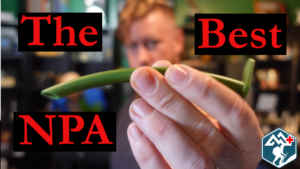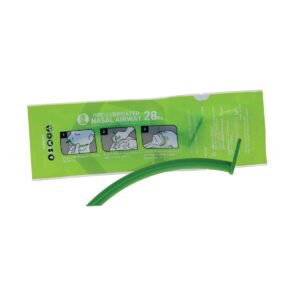The Best NPA on the Market

Casualty Management starts with bleeding control. Tourniquets applied, wounds packed and pressure dressings wrapped.
Once we're certain the bleeding has been completely stopped, we then turn our attention to ensuring the casualty has an open (or “patent”) airway.
The casualty needs as much oxygen as possible and if they are unconscious, their tongue can fall to the back of the throat and close (or “occlude”) the airway.
There are 2 primary ways of ensuring the tongue isn’t keeping air from entering. One is called the “Head-Tilt-Chin-Lift” and can only be used if the casualty is not at risk from a head or neck injury.
If a head/neck injury is suspected, the Jaw-Thrust technique is used to clear the airway. While both these are effective, they require the first responder to remain in place with their hand constantly on the casualty.
This isn’t ideal when there are other things to be done and other casualties to be taking care of. It’s a lucky day for a medic to only have a single casualty at a time.
The Nasal Pharyngeal Airway is a way to keep an open path for oxygen to enter, while allowing you to see to other duties that may arise.
I hate to be one of those guys who says something corny about a product like, “Why isn’t everyone doing this?” or, “It’s so simple, why didn’t I think of that?”
I hate to be that guy, but it’s true for the Combat Medical Pre-Lubricated Nasal Airway (NPA).

Pre-Lubricated Nasal Airway (NPA) from Combat Medical
I’ve spent a lot of time with the bulk ordered NPAs they stock ambulances, ERs, and Combat Trauma Bags, so I’m familiar with the way they are normally packaged.
A dry rubber tube, sometimes with an accompanying packet of lubricant.
The lubricant is important for getting the NPA down the nostril and throat. Without it, you’re going to struggle.
In a pinch, anything water soluble will do the trick for lubrication. Combat Medics are taught to use the casualty’s own saliva or blood to assist in insertion if there isn’t any medical grade lubricant available.
Some medics would tape the packet of Lube to the outside of their NPAs so that they were sure to have it when they needed it.
But a much simpler and efficient way to bypass all that hassle is to just carry the Self Lubricating NPAs
If you would like to see a demonstration on a live person, check out the Mountain Man Medical YouTube Channel.
